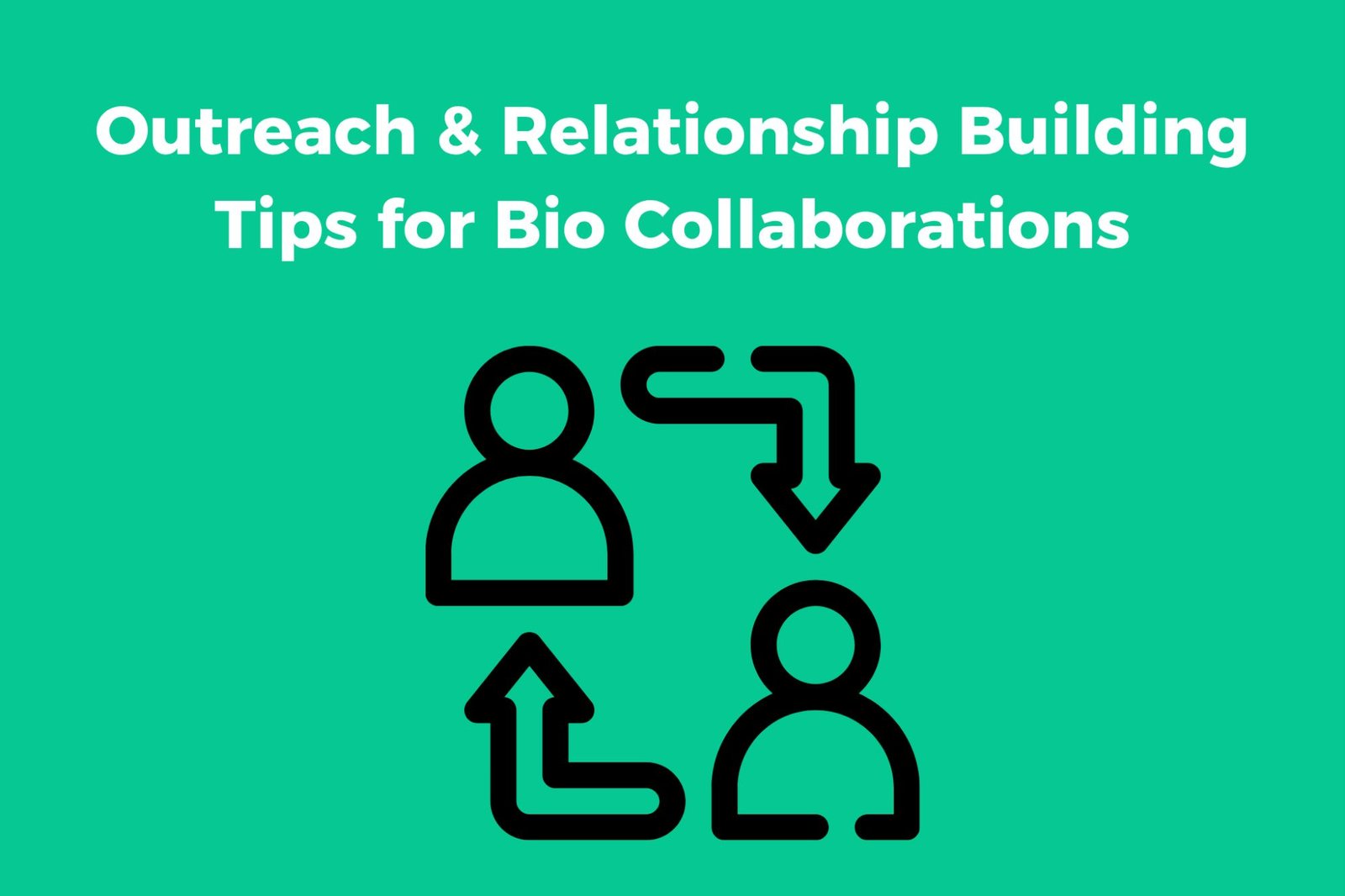
In the competitive landscape of digital marketing, strategic link exchanges have emerged as a powerful tool for enhancing online visibility and authority. One innovative approach to this is through author bio collaboration, where content creators leverage their author bios to build valuable backlinks. This blog delves into the nuances of author bio link building, offering a comprehensive overview of how guest posts and content contributions can facilitate effective link placement. We explore why author bio links are considered natural, white-hat, and scalable, providing insights into tracking results and scaling strategically using tools like Ahrefs, GSC, and SEMrush.
Discover how to craft SEO-optimized author bios that convert, and learn the art of outreach and relationship building for successful bio collaborations. We provide sample outreach templates and strategies for building ongoing relationships while avoiding transactional pitfalls. Additionally, we discuss structuring collaborations in a win-win model, ensuring content quality and relevance without resorting to spammy tactics.
Finding high-quality collaboration partners is crucial, and we guide you through identifying potential partners using metrics like Domain Rating and tools such as LinkedIn and SparkToro. Finally, we address the concept of collaborative link exchange, differentiating ethical collaboration from manipulative schemes, and aligning with Google’s guidelines for a sustainable SEO strategy.
html
What Is Author Bio Link Building?
Overview of Author Bio Backlinks
Author bio link building is a strategic approach to enhancing your website’s SEO by leveraging the author bio section in guest posts and content contributions. This method involves placing a backlink to your site within the author bio, which not only drives traffic but also boosts your site’s authority and search engine rankings.
How Guest Posts and Content Contributions Enable Link Placement
When you contribute content to other websites, you often have the opportunity to include a brief author bio. This is where you can naturally insert a backlink to your own site. Here’s how it works:
- You write a high-quality, relevant article for a reputable site.
- In your author bio, you include a link back to your website.
- This link helps drive traffic and enhances your site’s SEO.
By consistently contributing valuable content, you can build a network of backlinks that support your SEO strategy.
Why Author Bio Links Are Natural, White-Hat, and Scalable
Author bio links are considered natural and white-hat because they are earned through genuine content contributions rather than manipulative tactics. Here’s why they are beneficial:
- Natural: These links are placed in context, providing value to readers and search engines alike.
- White-Hat: They adhere to Google’s guidelines, focusing on quality and relevance.
- Scalable: As you build relationships with more sites, you can expand your reach and influence.
By focusing on author bio backlinks, you can enhance your site’s authority in a sustainable and ethical manner.
The Concept of Collaborative Link Exchange (Without Violating Google Guidelines)
What is a Strategic Link Exchange Through Collaboration?
In the world of SEO, a strategic link exchange through collaboration is a method where two or more websites agree to share links in a way that benefits all parties involved. This isn’t about trading links in a manipulative manner but rather building genuine relationships that enhance the value and authority of your content. By collaborating with others in your niche, you can create a network of ethical link exchanges that boost your site’s visibility and credibility.
Difference Between Ethical Collaboration and Manipulative Schemes
It’s crucial to distinguish between ethical collaboration and manipulative link schemes. Ethical link exchanges focus on:
- Building genuine relationships with other content creators.
- Ensuring the exchanged links are relevant and add value to the reader.
- Maintaining transparency about the nature of the collaboration.
On the other hand, manipulative schemes often involve:
- Exchanging links solely for the purpose of boosting rankings without regard to content quality.
- Using automated programs to generate links.
- Participating in link farms or networks that violate Google’s guidelines.
Google’s Stance on Link Exchanges (EEAT-Friendly Approach)
Google’s guidelines emphasize the importance of Experience, Expertise, Authoritativeness, and Trustworthiness (EEAT) in content. When it comes to link exchanges, Google advises against any practices that could be seen as manipulative. Instead, focus on:
- Creating high-quality, valuable content that naturally attracts links.
- Engaging in collaborations that enhance the user experience and provide real value.
- Being transparent about your link exchange practices and ensuring they align with Google’s guidelines.
By adhering to these principles, you can engage in collaborative SEO efforts that are both ethical and effective, helping you build a robust online presence without risking penalties from search engines.
How to Find High-Quality Collaboration Partners
Identifying Bloggers, Agencies, SaaS Brands, and Niche Writers
Finding the right collaboration partners can be a game-changer for your SEO strategy. Whether you’re looking to connect with bloggers, agencies, SaaS brands, or niche writers, the key is to focus on quality over quantity. Let’s dive into how you can identify the best partners for your needs.
Metrics to Check: Domain Rating (DR), Traffic Relevance, Content Quality
When evaluating potential partners, it’s crucial to consider specific metrics that indicate their authority and relevance:
- Domain Rating (DR): A higher DR suggests a more authoritative site, which can boost your SEO efforts.
- Traffic Relevance: Ensure their audience aligns with your target market for maximum impact.
- Content Quality: High-quality content reflects well on your brand and enhances trustworthiness.
Tools: Ahrefs, LinkedIn, SparkToro, HARO
Utilizing the right tools can streamline your search for collaboration partners:
- Ahrefs: Use this tool to analyze potential partners’ DR and traffic metrics.
- LinkedIn: Connect with industry professionals and explore potential collaborations.
- SparkToro: Discover where your audience hangs out online and find influencers in your niche.
- HARO (Help a Reporter Out): Engage with journalists and bloggers looking for expert insights.
Finding Guest Post Partners
Guest posting is a fantastic way to build relationships and gain exposure. Start by reaching out to bloggers and websites that align with your niche. Personalize your outreach to show genuine interest in their work and how you can add value to their audience.
SEO Link Collaboration and Author Bio Link Outreach
Collaborating on SEO links and author bio links can significantly enhance your online presence. When reaching out, be clear about the mutual benefits and how the collaboration can help both parties grow. Remember, it’s about building long-term relationships, not just quick wins.
By focusing on these strategies and using the right tools, you can find high-quality collaboration partners that will help elevate your brand and SEO efforts. Let’s get started on building those valuable connections!
Structuring the Collaboration: A Win-Win Model
How to Co-Author or Guest Post with Value-Driven Intent
Collaborating on content creation can be a rewarding experience for both parties involved. When you co-author or guest post, it’s essential to focus on delivering value. This means understanding your audience and crafting content that resonates with them. By doing so, you not only enhance your credibility but also build a lasting relationship with your co-author or host.
Setting Expectations: Content Quality, Link Placement, Topic Relevance
Before diving into a collaboration, it’s crucial to set clear expectations. Here are some key points to consider:
- Content Quality: Ensure that the content is well-researched, informative, and engaging. High-quality content is more likely to be shared and appreciated by readers.
- Link Placement: Discuss where and how links will be placed within the content. Links should be relevant and add value to the reader’s experience.
- Topic Relevance: Choose topics that align with both parties’ expertise and audience interests. This ensures that the content is not only relevant but also authoritative.
Tips to Avoid Spammy or Obvious Link Swaps
Link exchanges can be beneficial, but it’s important to approach them ethically. Here are some tips to avoid spammy practices:
- Focus on Quality Over Quantity: Prioritize building a few high-quality links rather than numerous low-quality ones.
- Ensure Relevance: Links should be contextually relevant to the content and provide additional value to the reader.
- Avoid Over-Optimization: Natural link placement is key. Avoid stuffing keywords or forcing links into the content.
By following these guidelines, you can create a collaborative environment that benefits everyone involved. Remember, the goal is to build trust and authority, not just to gain links. With a strategic approach, your guest post bio strategy and co-author SEO efforts can lead to meaningful connections and enhanced online presence.
Crafting SEO-Optimized Author Bios That Convert
Creating an author bio that not only informs but also converts is an art. It’s your chance to establish trust, showcase expertise, and guide readers to take action. Let’s dive into the essentials of crafting an SEO-optimized author bio that truly works.
What to Include in an Author Bio
When crafting your author bio, consider these key elements:
- Anchor Text: Use descriptive and relevant anchor text for any links. This helps with SEO and gives readers a clear idea of what to expect.
- URL Choice: Link to a page that offers value, such as a personal blog or a relevant article. Ensure the URL is clean and easy to remember.
- Call to Action (CTA): Encourage readers to engage further. Whether it’s following you on social media or signing up for a newsletter, a strong CTA can increase conversions.
Writing with Trust and Authority (EEAT Signal)
To build trust and authority, your bio should reflect your experience and expertise. Here’s how you can achieve that:
- Experience: Share relevant experiences that highlight your journey and achievements.
- Expertise: Mention any qualifications or accolades that establish your credibility.
- Authoritativeness: Use a confident tone and back up claims with facts or examples.
- Trustworthiness: Be honest and transparent about your intentions and background.
Real Examples of High-Converting Bios
Let’s look at some examples of author bios that effectively convert:
- Example 1: “Jane Doe is a seasoned digital marketer with over 10 years of experience. She has helped brands like XYZ and ABC grow their online presence. Follow her insights on her blog.”
- Example 2: “John Smith, a published author and SEO expert, shares his knowledge on his website. Subscribe to his newsletter for weekly tips.”
By optimizing your author bio for SEO and incorporating these elements, you can enhance your online presence and drive meaningful engagement. Remember, your bio is more than just a summary—it’s a strategic tool for building connections and authority.
Outreach & Relationship Building Tips for Bio Collaborations

Sample Outreach Templates for Collaboration
When reaching out for author collaboration, crafting a personalized and engaging message is key. Here are a few templates to get you started:
- Template 1: “Hi [Name], I’ve been following your work on [Topic] and truly admire your insights. I believe a collaboration could be mutually beneficial. Would you be open to discussing a potential partnership?”
- Template 2: “Hello [Name], I’m [Your Name], and I write about [Your Topic]. I think our audiences would benefit from a joint effort. Let’s explore how we can work together!”
- Template 3: “Dear [Name], I’m impressed by your recent article on [Topic]. I’d love to collaborate on a piece that combines our expertise. Are you interested in a chat?”
Building Ongoing Relationships, Not One-Time Swaps
Successful collaborations are built on trust and mutual respect. Here’s how you can nurture long-term relationships:
- Stay Engaged: Regularly interact with your collaborators’ content by commenting, sharing, and providing feedback.
- Offer Value: Always look for ways to add value to your partner’s work, whether through sharing insights or offering resources.
- Communicate Openly: Keep the lines of communication open. Discuss goals, expectations, and feedback to ensure a smooth collaboration.
How to Avoid Being Flagged as Transactional
To maintain a genuine relationship, avoid coming across as transactional. Here are some tips:
- Focus on Connection: Prioritize building a connection over immediate gains. Show genuine interest in your collaborator’s work.
- Be Transparent: Clearly communicate your intentions and be honest about what you hope to achieve from the collaboration.
- Provide Consistent Support: Offer support beyond the initial collaboration. This could be through continued engagement or future projects.
By following these tips, you can enhance your author collaboration outreach, strengthen your SEO networking, and build meaningful, lasting relationships. Remember, the goal is to create a network of trusted partners who can help each other grow.
Tracking Results and Scaling Strategically
How to Measure Link Impact via Ahrefs, GSC, SEMrush
When it comes to understanding the impact of your link-building efforts, tools like Ahrefs, Google Search Console (GSC), and SEMrush are invaluable. These platforms provide insights into how your links are performing and where you can improve. By regularly checking these tools, you can track author bio links and measure guest post ROI effectively.
SEO Metrics: Referral Traffic, Link Profile Growth, Content Rankings
To gauge the success of your link-building strategy, focus on key SEO metrics:
- Referral Traffic: Monitor the traffic coming from your backlinks. This indicates how well your links are driving visitors to your site.
- Link Profile Growth: Use Ahrefs to track the growth of your link profile over time. A healthy link profile is diverse and steadily growing.
- Content Rankings: Check how your content is ranking in search engines. Improved rankings often correlate with successful link-building efforts.
Building a Repeatable Process for Ongoing Link Value
Creating a sustainable link-building strategy involves developing a repeatable process. Here’s how you can scale content partnerships and ensure ongoing link value:
- Identify Potential Partners: Use SEMrush to find websites with high domain authority that align with your niche.
- Track Author Bio Links: Regularly review the performance of your author bio links to ensure they are contributing to your SEO goals.
- Measure Guest Post ROI: Evaluate the return on investment from guest posts by analyzing traffic, engagement, and conversions.
- Refine and Repeat: Continuously refine your strategy based on data insights and repeat successful tactics to scale your efforts.
By following these steps and leveraging the right tools, you can strategically track results and scale your link-building efforts, ensuring long-term success and growth.
Conclusion
Strategic link exchanges through author bio collaboration offer a powerful avenue for enhancing your online presence while fostering meaningful connections within your industry. By carefully selecting partners whose content aligns with your own, you ensure that the links you exchange are not only relevant but also valuable to your audience. This approach not only boosts your SEO efforts but also enriches the reader’s experience, creating a win-win situation for all parties involved.
Quality and relevance are the cornerstones of successful link exchanges. By focusing on these elements, you build a network of trusted collaborators who can help amplify your reach and credibility. As you continue to engage in these strategic partnerships, remember that the ultimate goal is to provide value to your readers, enhancing their journey with insightful and authoritative content. Embrace this collaborative spirit, and watch your online influence grow.
